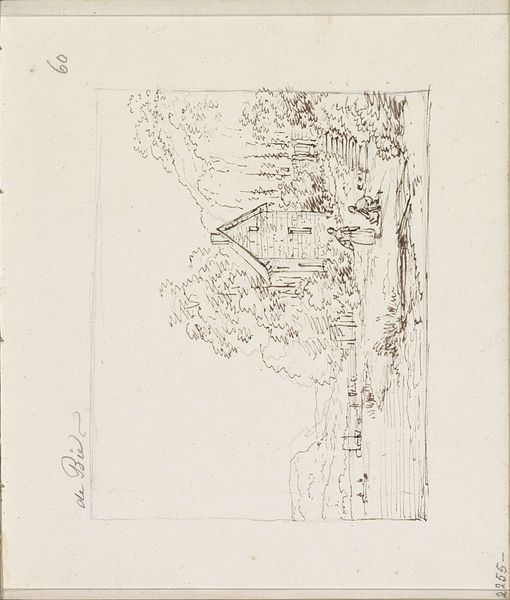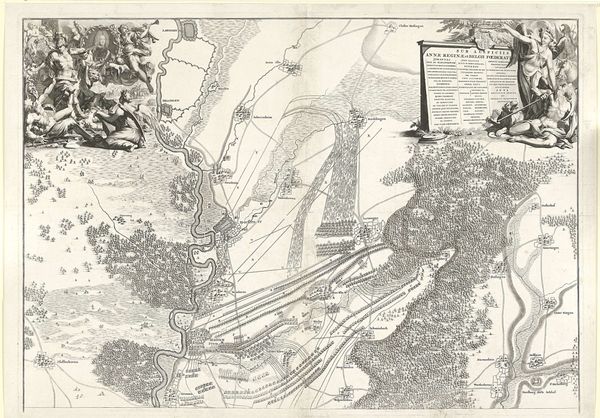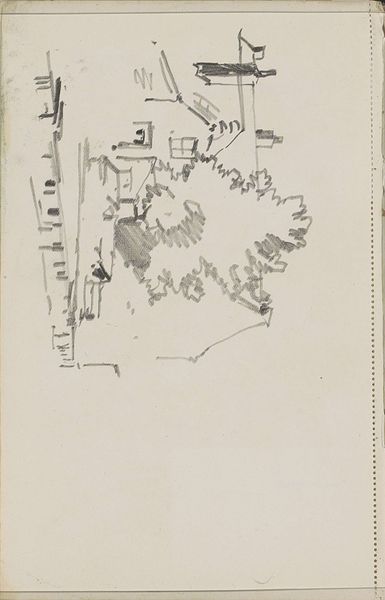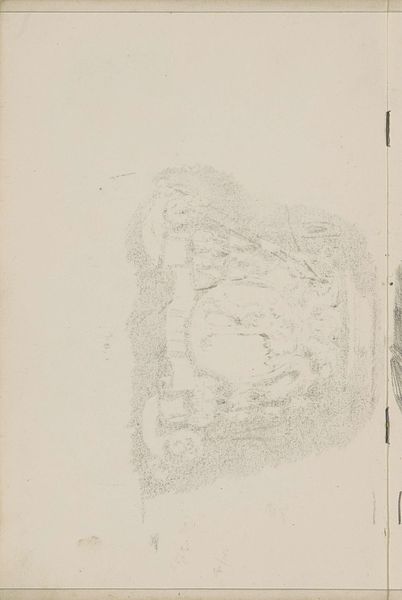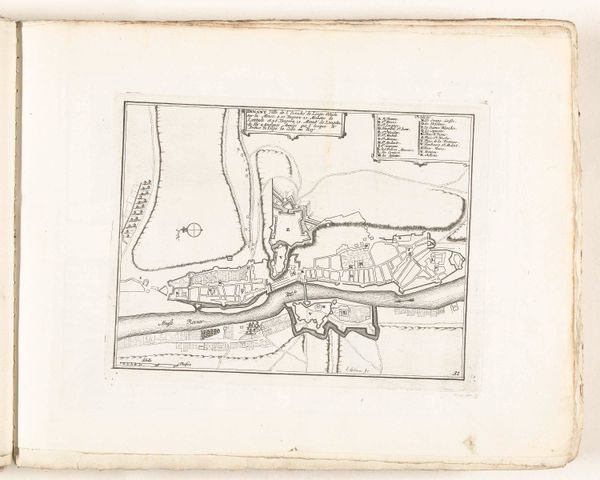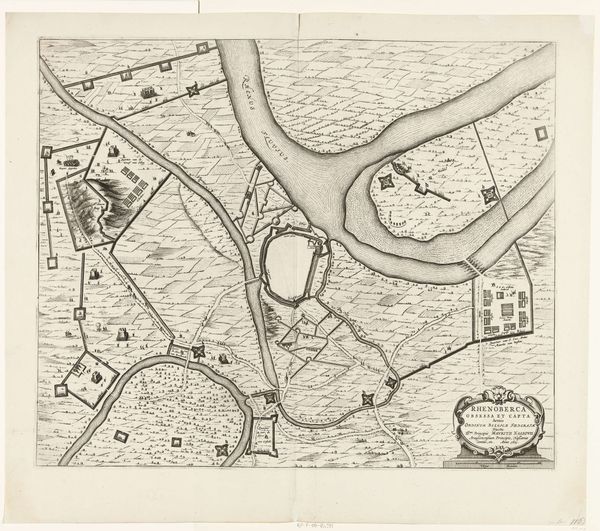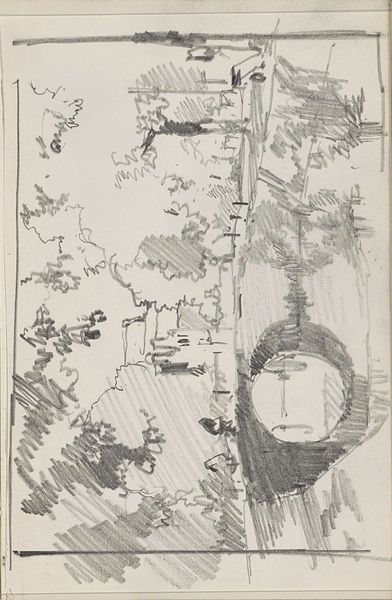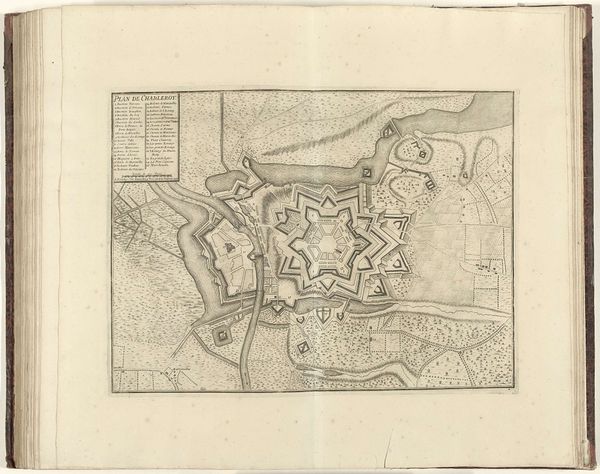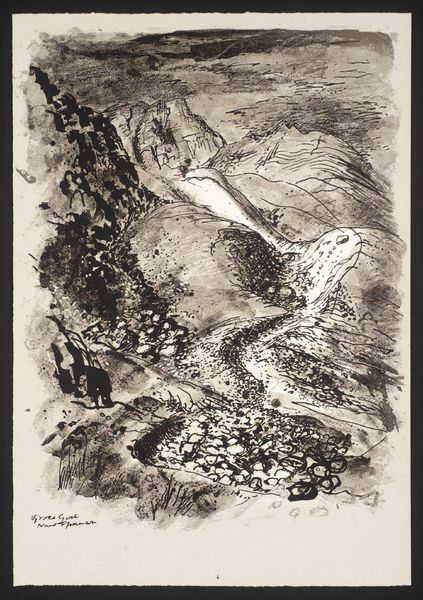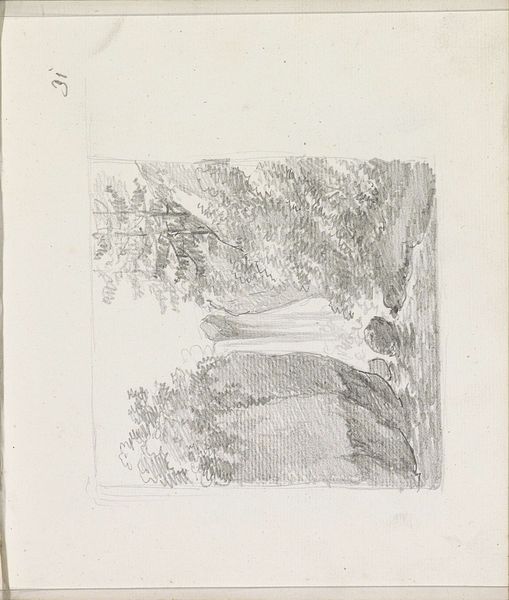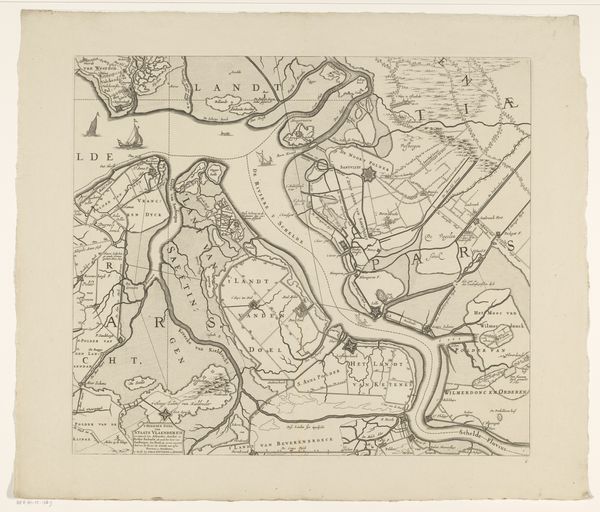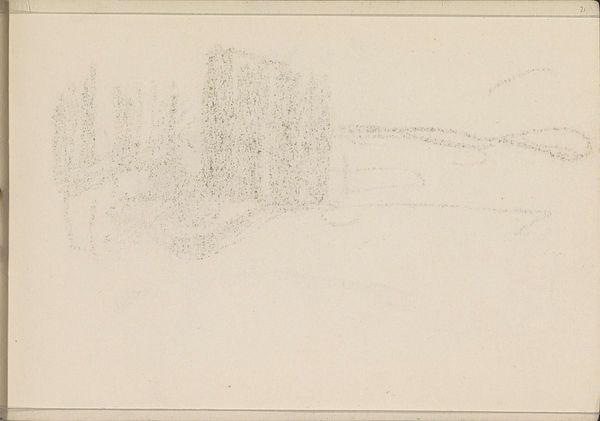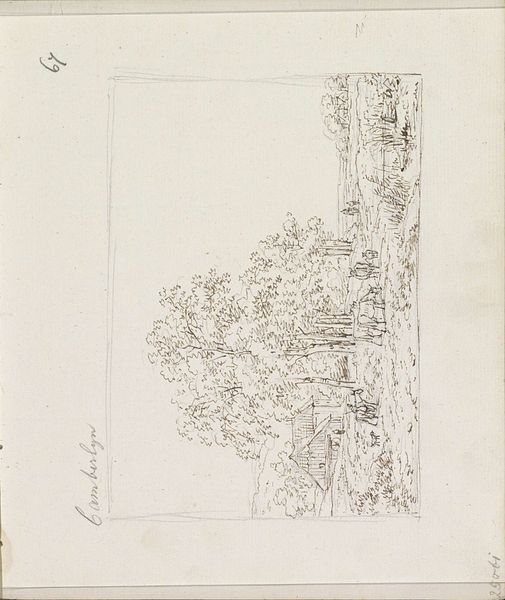
drawing, watercolor, architecture
#
drawing
#
landscape
#
watercolor
#
cityscape
#
architecture
Dimensions: overall: 51 x 38.2 cm (20 1/16 x 15 1/16 in.)
Copyright: National Gallery of Art: CC0 1.0
Curator: Right, let’s consider this rather lovely drawing and watercolor on paper entitled "Peter K. Knapp Estate," which dates from around 1936. Editor: Wow, a bird’s-eye view! Immediately gives me this feeling of serene control, almost like overseeing a kingdom. The shades of green are just… hypnotizing! It reminds me of playing SimCity when I was a kid, designing my dream world from above. Curator: Indeed. From a symbolic perspective, these elevated vantage points were quite fashionable amongst the gentry of that era. They implicitly suggest not only the ownership but also the governance of the space—akin to a pastoral manor. Editor: So, it’s more than just a pretty landscape? More of a statement? Curator: Precisely! The winding paths, manicured lawns, even the specific placement of the trees; all point towards a very particular aesthetic that conveys harmony and ordered natural beauty. Look at that little walled garden. These estates aren't just homes; they're visual expressions of identity. The composition invites contemplation on the relationship between domestic architecture and nature. Editor: I’m particularly drawn to the way the buildings themselves are rendered, all rosy and subdued—almost disappearing into the landscape. The shapes suggest both solidity and a sense of lightness. A paradox! The use of watercolor, the greens melding with hints of blues... it really softens what could have been quite rigid lines. Curator: Agreed. In a period defined by shifting social structures and growing industrialization, returning to nature became, in effect, returning to one’s own sense of self-sufficiency, of rootedness, even spiritual clarity. Each deliberate visual cue serves that goal. The vantage from above further isolates this idea, creating a feeling of complete detachment from all else. Editor: It’s like a little slice of Eden! Maybe slightly idealized, slightly unattainable, but ultimately beautiful. It makes me wonder about the artist's perspective. Were they dreaming of such an escape or were they critiquing its very existence? Curator: Possibly both, art is hardly ever one thing! But viewing it today, we’re allowed to consider it for what it communicates about historical notions of privilege, land use, and the aesthetic values assigned to the cultivated landscape. It's really a microcosm. Editor: And I’m grateful for a chance to let this bird’s-eye perspective give my thoughts wings today. Curator: Well said. The dialogue continues…
Comments
No comments
Be the first to comment and join the conversation on the ultimate creative platform.
